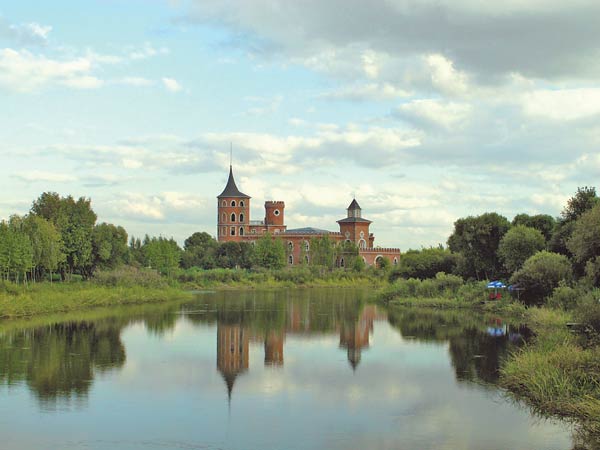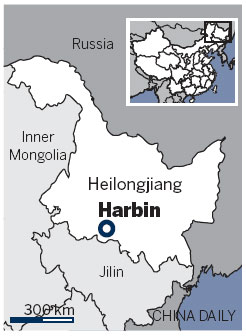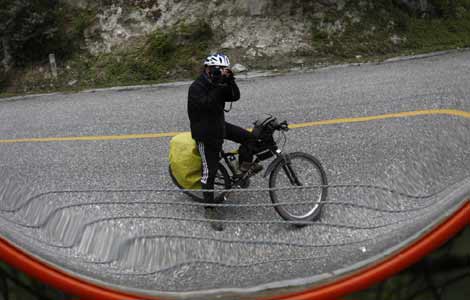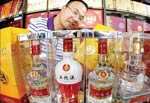'Moscow of the Orient'
Updated: 2011-10-06 08:05
By Zhang Zixuan (China Daily)
|
|||||||||
|
 The Russian-style theme park Volga Manor is a major attraction on the outskirts of Harbin. Zhang Zixuan / China Daily |
My first impressions of Harbin come from the driver who picks us up at the airport. Asked to show his license at a toll booth, he becomes impatient and raises his voice.
 |
"We were joking," the driver says, suddenly aware that his bus load of passengers, especially visitors from abroad, have gone quiet, over the seemingly sharp exchange of words.
There are many signs of this informality typical of people from Northeast China in the provincial capital of Heilongjiang province, making for a lively and vibrant city.
Central Avenue never seems to sleep. At night, Russian-style buildings come to life under neon lights, underscoring Harbin's reputation as the "Moscow of the Orient".
My first quest is to find the store selling the ice lollipop "Modern", or "Madieer" in Chinese, which takes its name from the well-known hotel on Central Avenue built in 1906, and to which the store is attached.
Many friends had told me it was a must-try.
It is only when I stand on Central Avenue that I realize how easy it is to find the store - it is the one with the largest crowd on the street. Many are holding handfuls of the creamy yellow lollies, that come for a mere 2 yuan ($31 cents).
As soon as I bite into one, I understand why every customer buys dozens rather than just one of these delectable melt-in-the-mouth lollies.
A friend, who lives in Harbin, tells me that in winter, people wrapped in heavy down coats, stand in line, stamping their feet to keep warm in the -35 C temperatures, just to buy these ice lollipops.
I am suddenly reminded of a joke our bus driver told us. On a biting cold winter day, a foreigner walked into a restaurant and ordered a bottle of Harbin beer. When asked if he wanted an iced one or one at "normal temperature", he chose the latter saying, "It's too cold to drink an iced one." It was only when the beer arrived at his table did he realize that "normal temperature" was -35 C, while an iced one, would have only been around 0 C.
Many tourists like to come here in winter for skiing and to enjoy the ice sculptures. But early fall, the most comfortable season in Harbin, suits me perfectly.
My next quest takes me across the street from Modern Hotel, for the famed Harbin sausage. Shops of HRL and Qiulin, the best two sausage brands, are standing next to each other.
The HRL sausage has a stronger flavor of garlic while the Qiulin sausage is smokier. But you can't go wrong with either of them, especially when washed down with Kvass, a traditional Russian non-alcoholic beverage fermented from bread.
Another popular Harbin food is yeast bread, yet another example of the Russian influence in Harbin.
There's a bakery in the Sun Island National Wetland Park's Russian cultural town that attracts Russian customers to this day.
The town maintains how the Russians lived, down to the smallest detail. Here you can even find that most representative Russian item - the Matryoshka doll.
Usually these wooden nesting toys show Russian women dressed in traditional costumes. But I also found those of former Soviet leaders such as Vladimir Lenin, Josef Stalin, Leonid Brezhnev and Mikhail Gorbachev.
I spent my last night in Harbin at the Volga Manor, a Russian-style theme park in rural Harbin, that houses replicas of more than 20 iconic buildings from Russia and Harbin.
Standing along the Ashi River and looking at the reed beds and silver birches swaying in the wind, I have an epiphany about Russian oil paintings and their heavy, dark colors - that is just how things look in real life.
Beside me, a Chinese woman in her 60s begins to sing Night of Moscow Suburbs, an old Russian song that has accompanied generations of Chinese since the 1950s. Her excellent pronunciation of Russian is impressive.
(China Daily 10/06/2011 page10)










